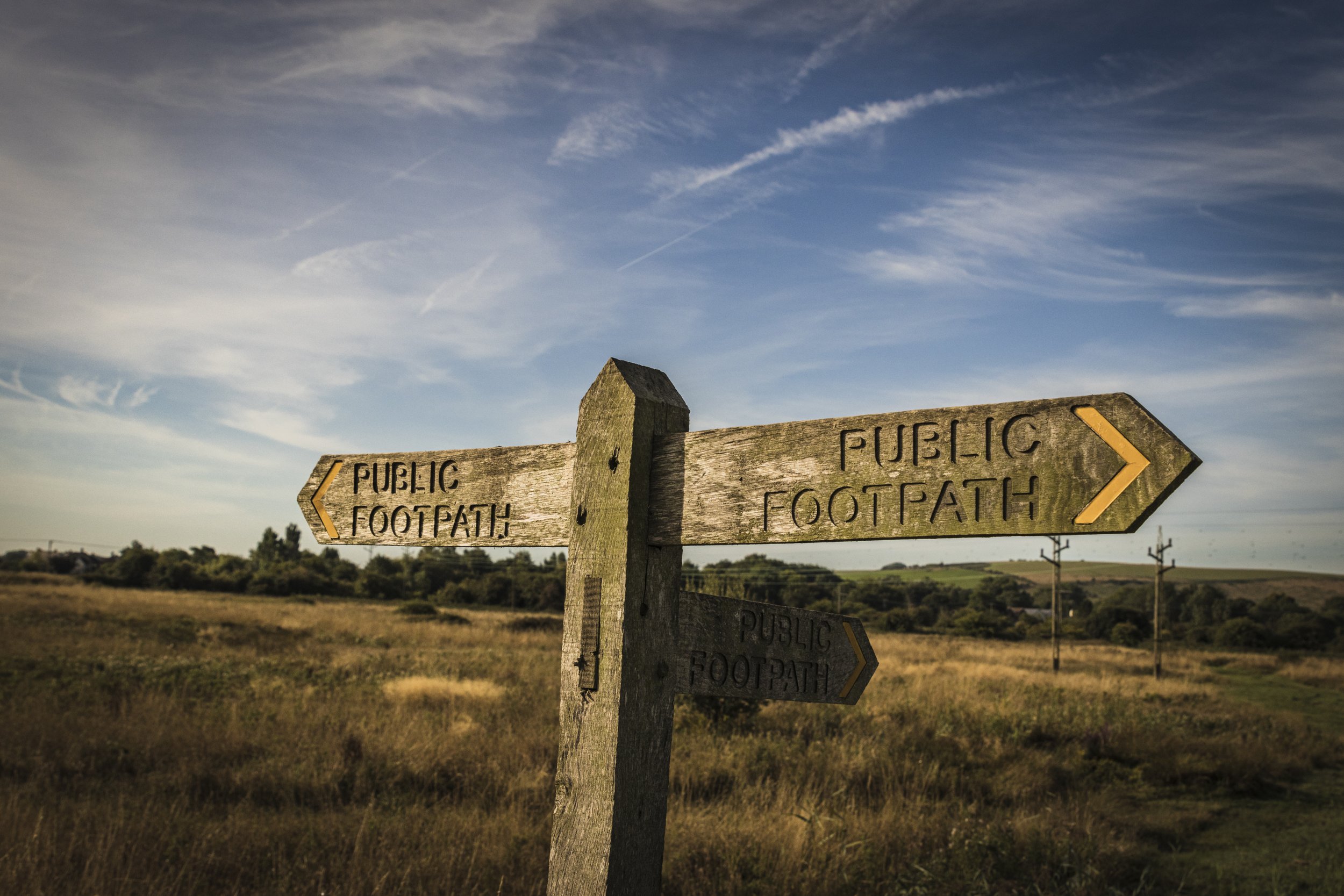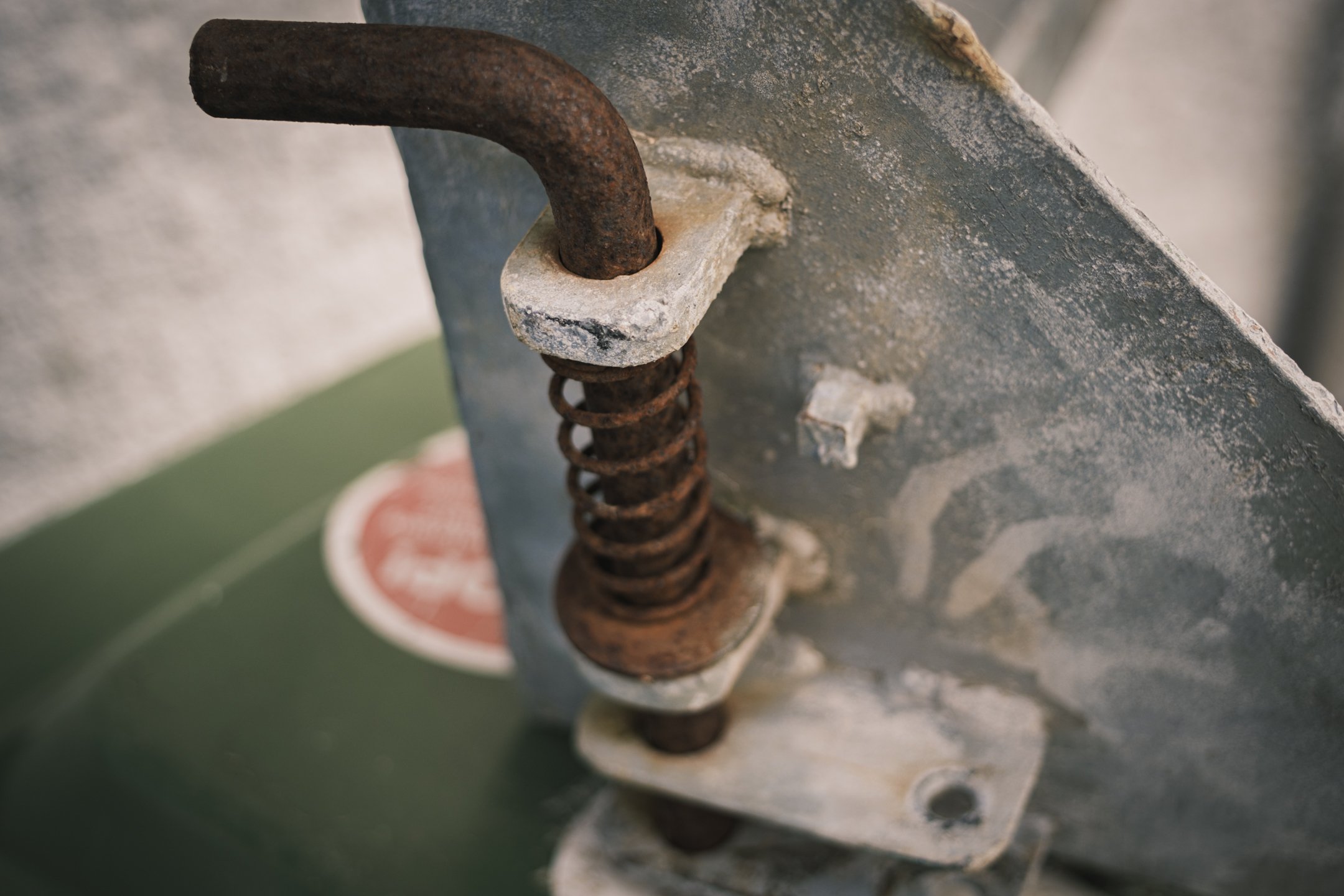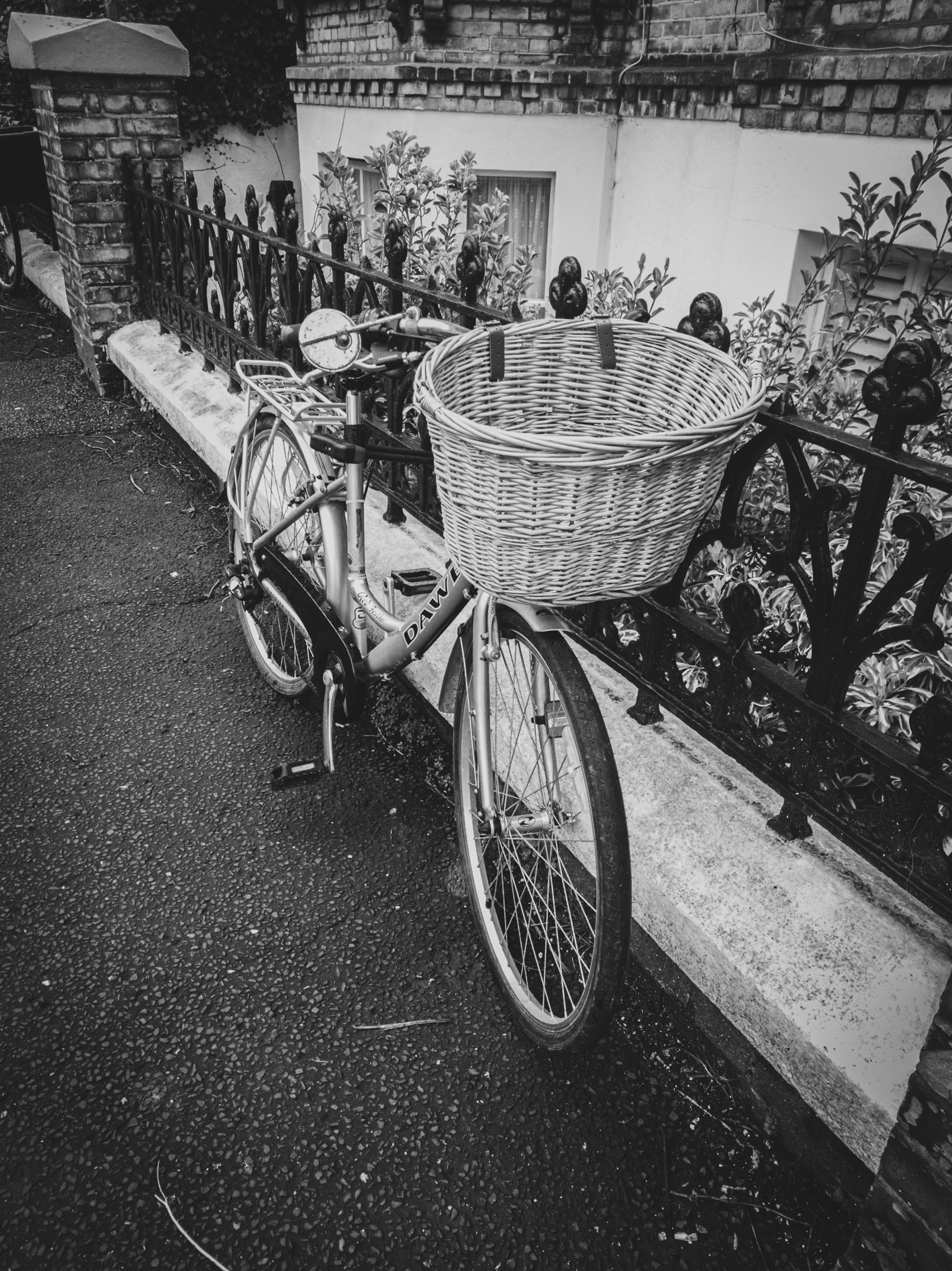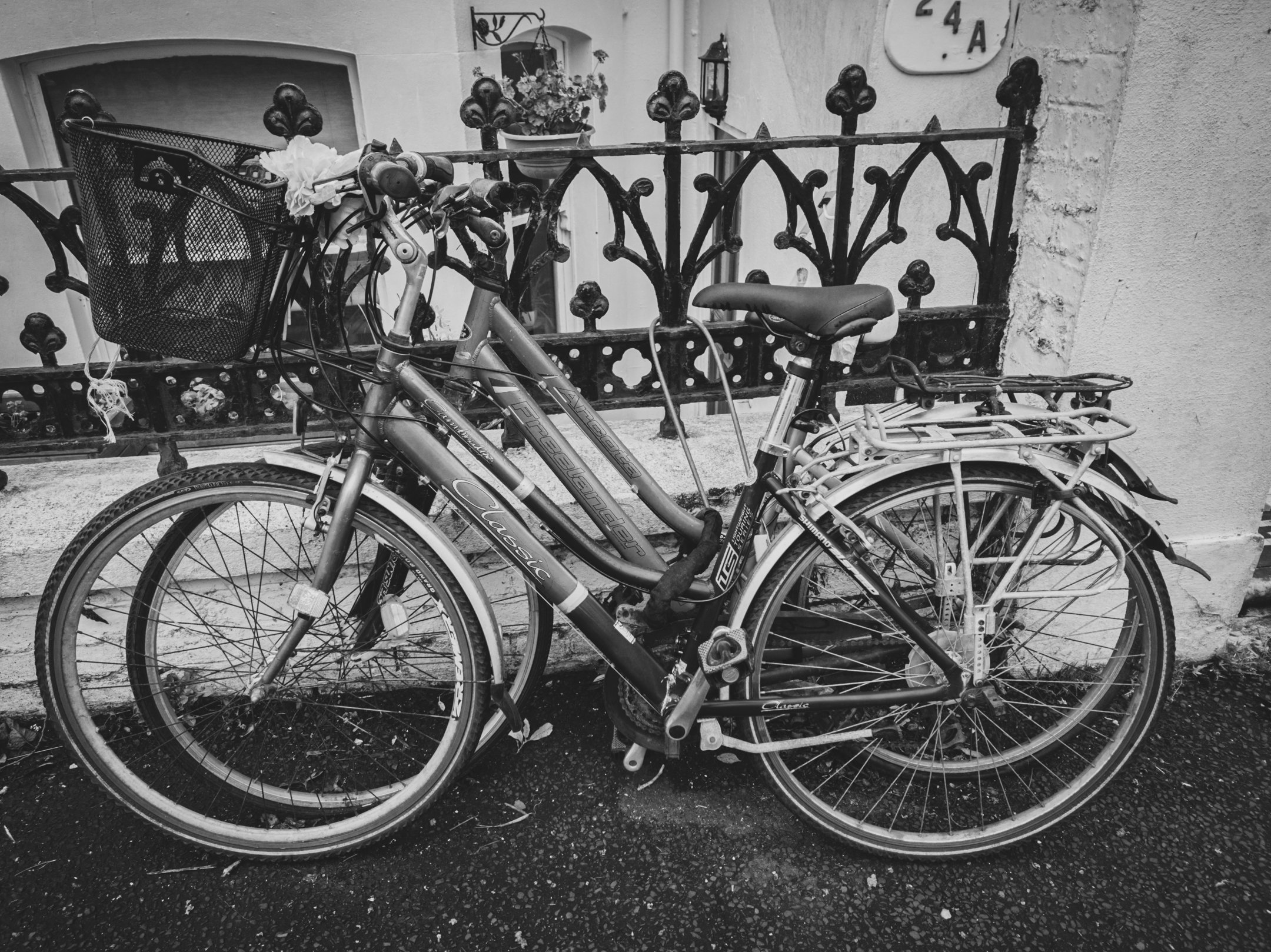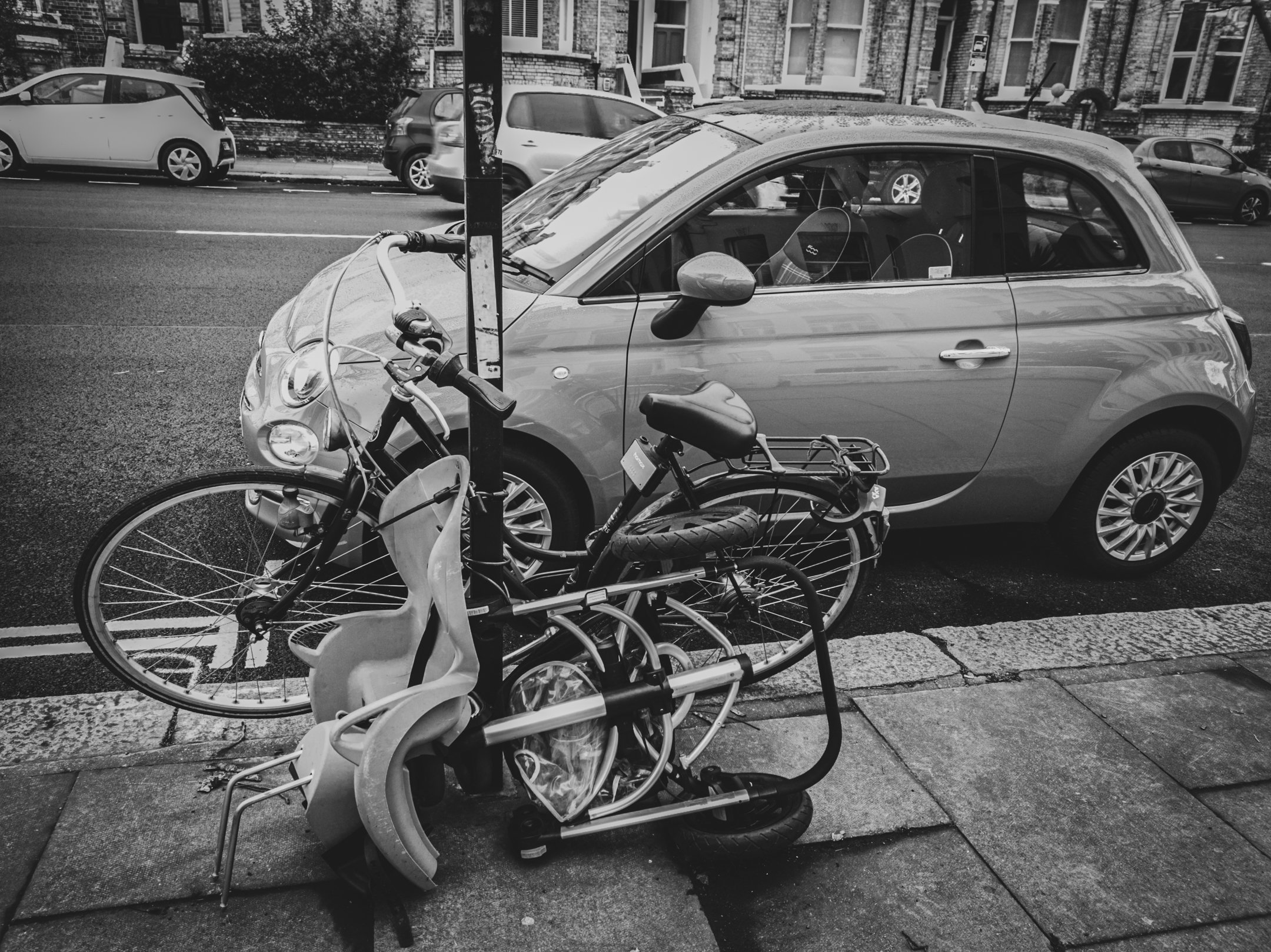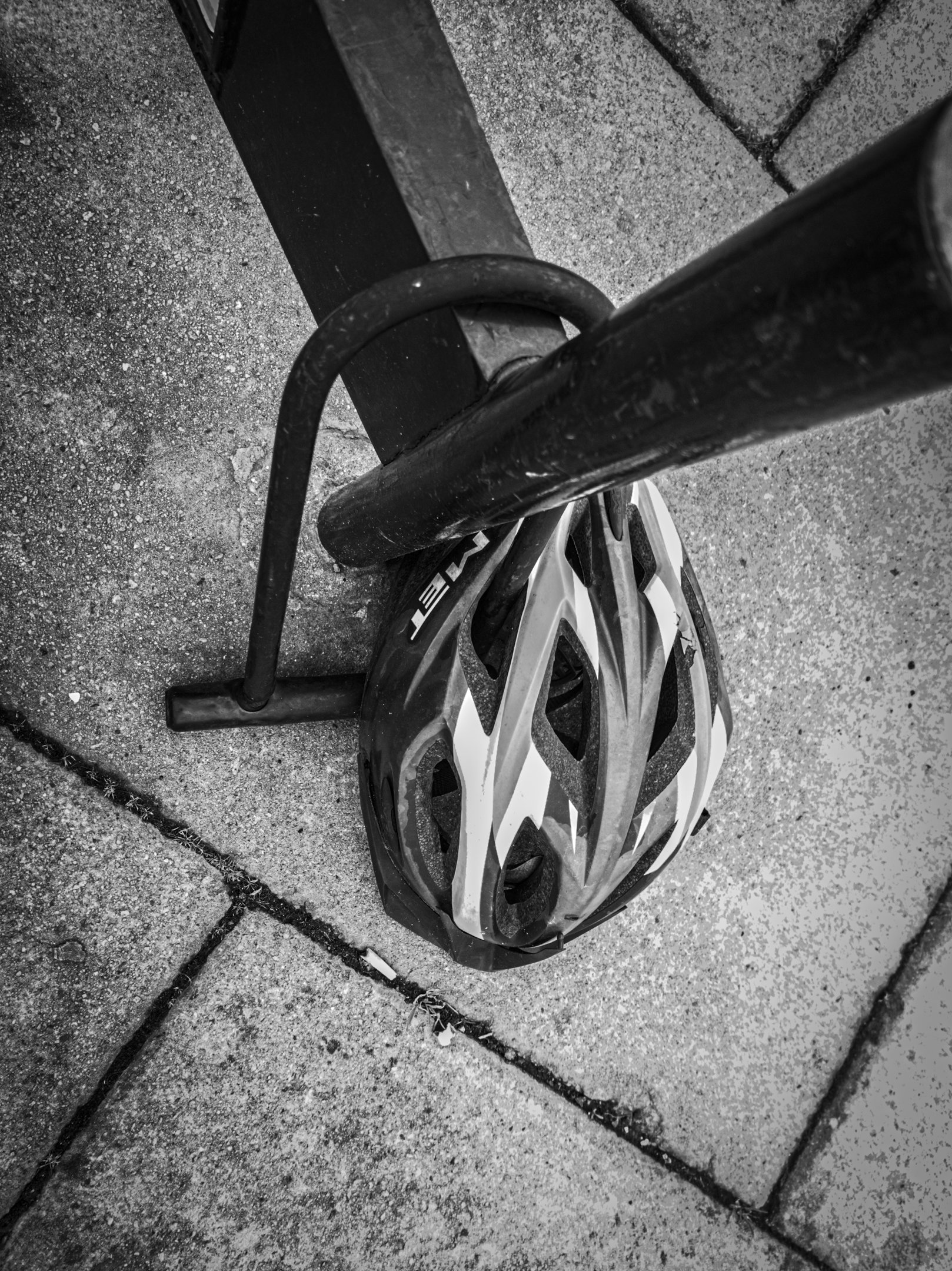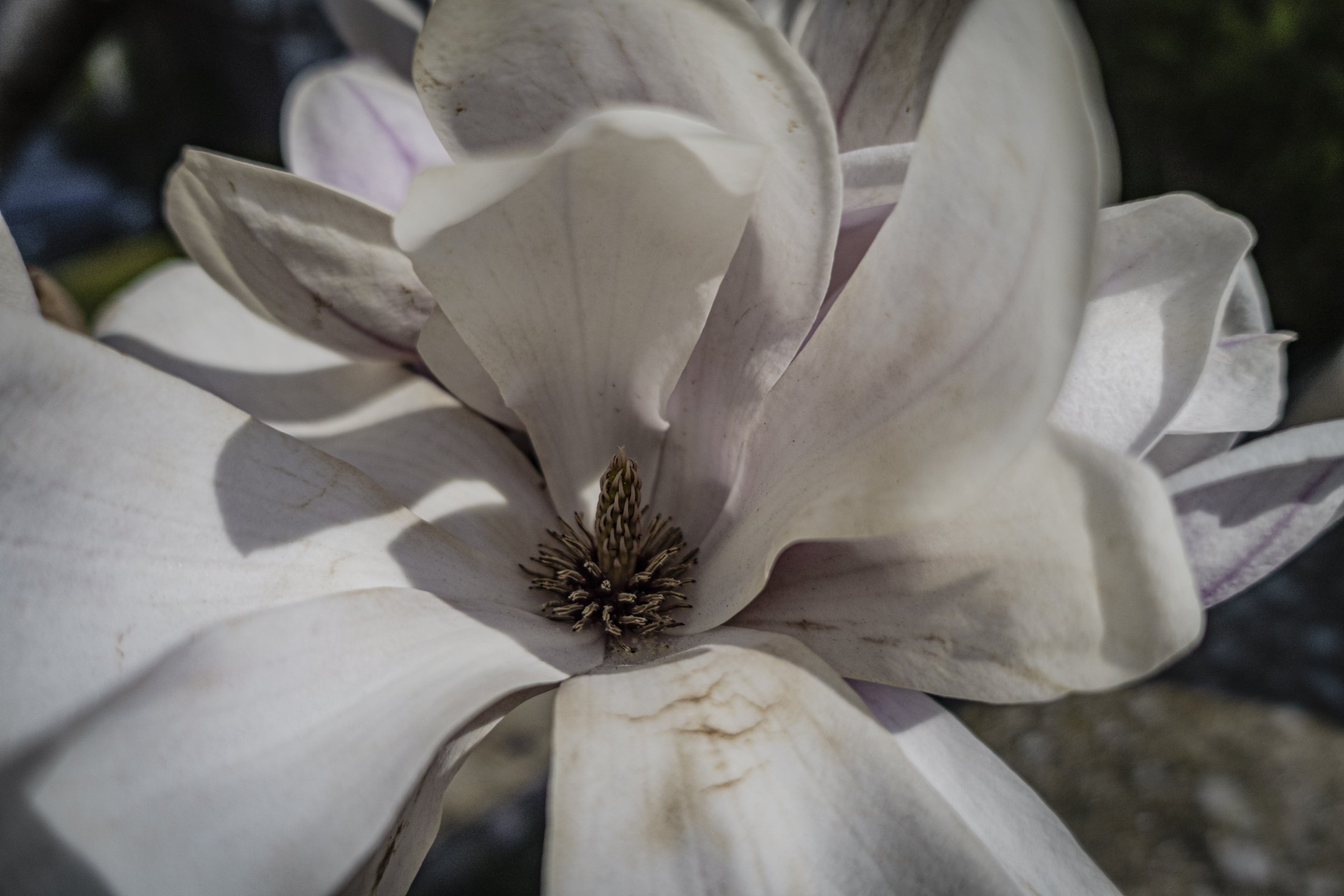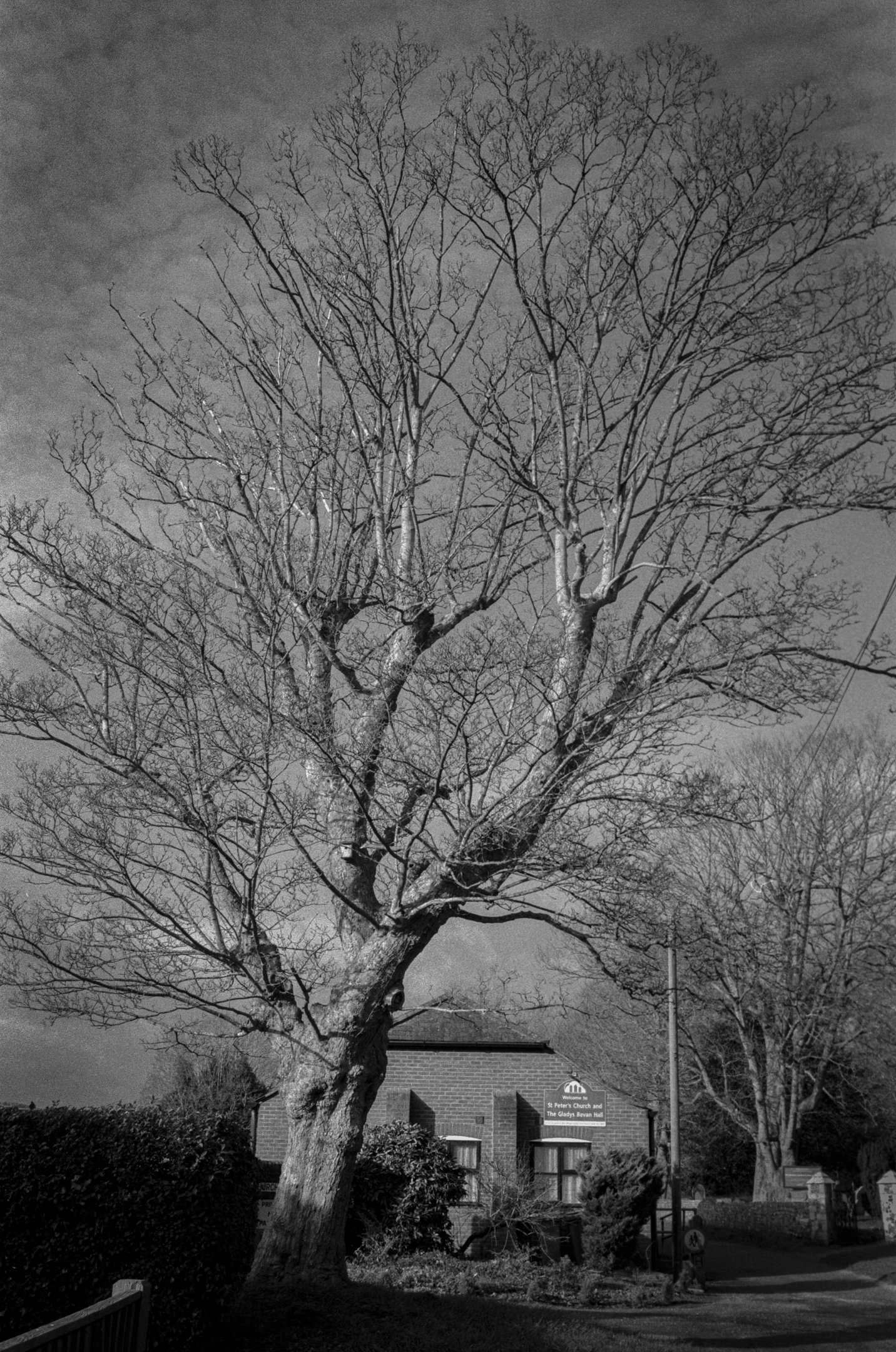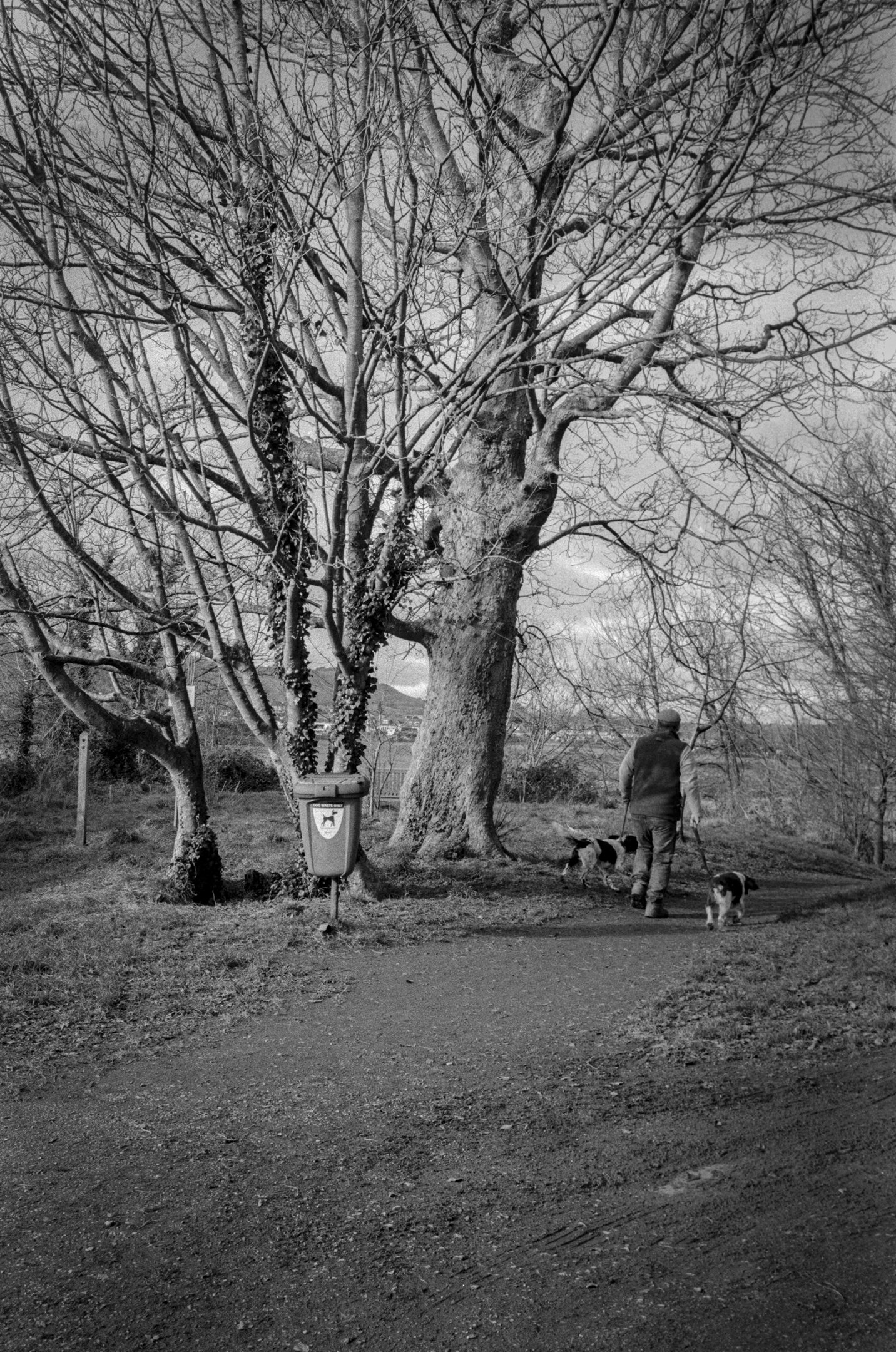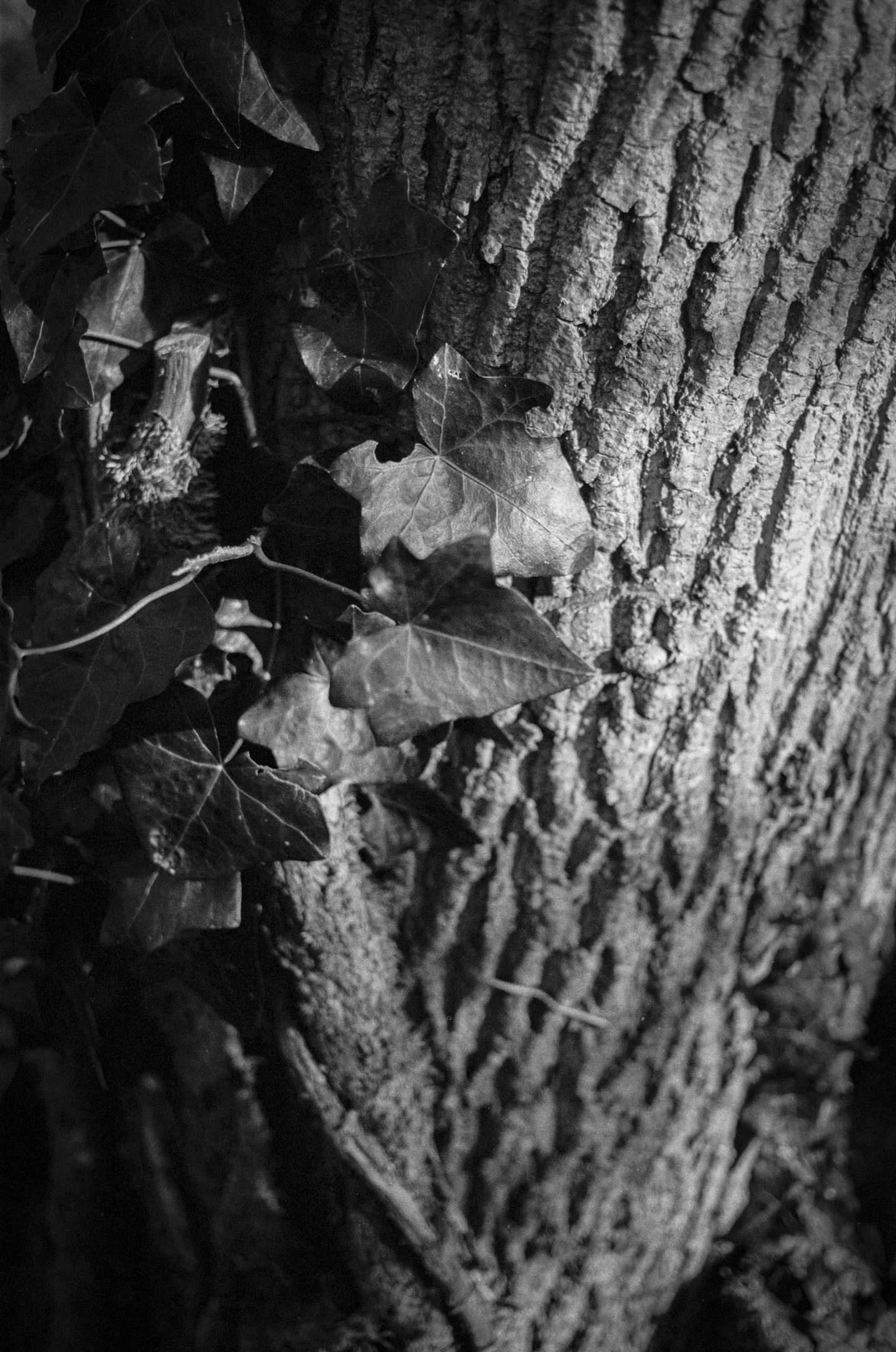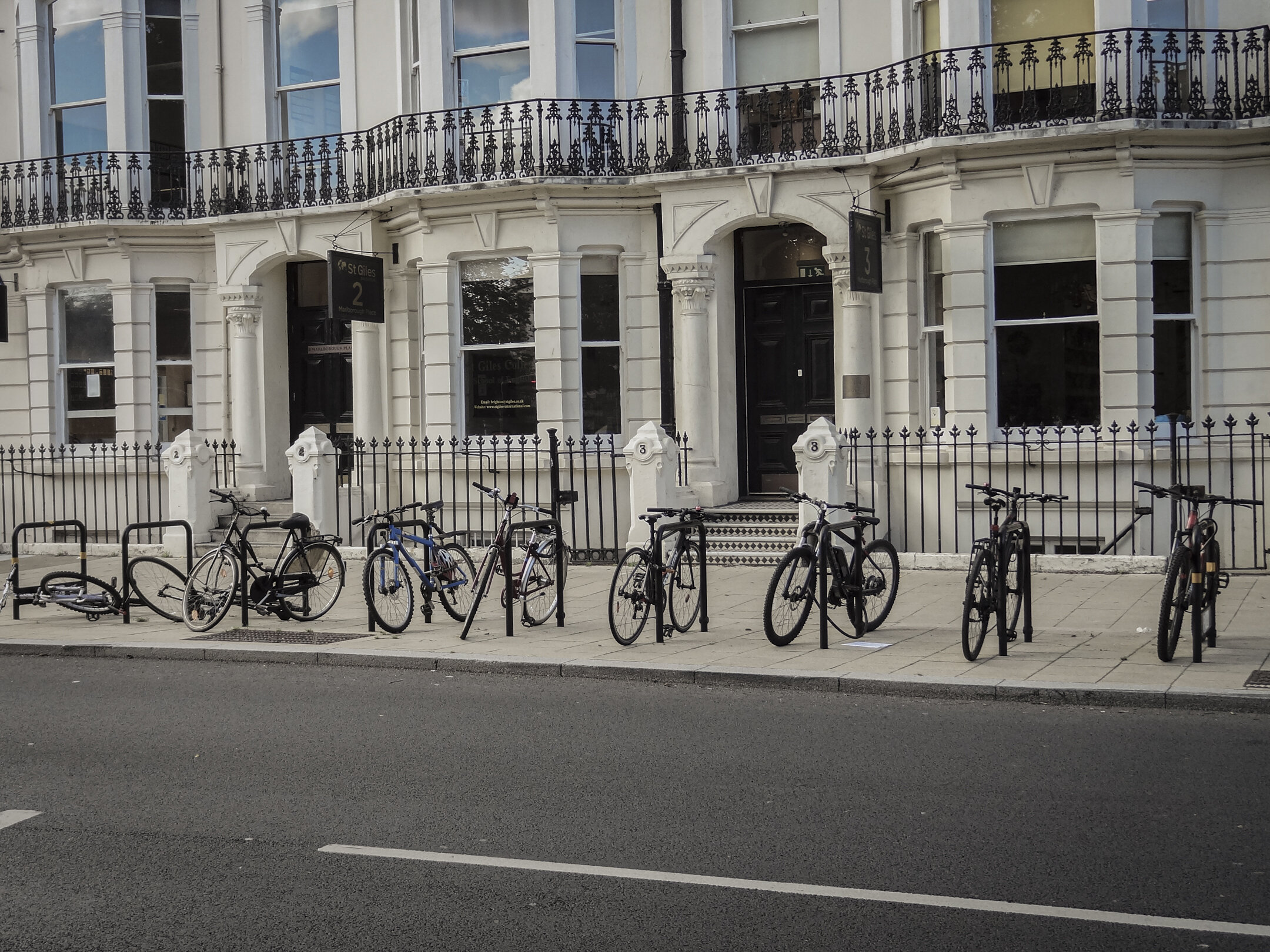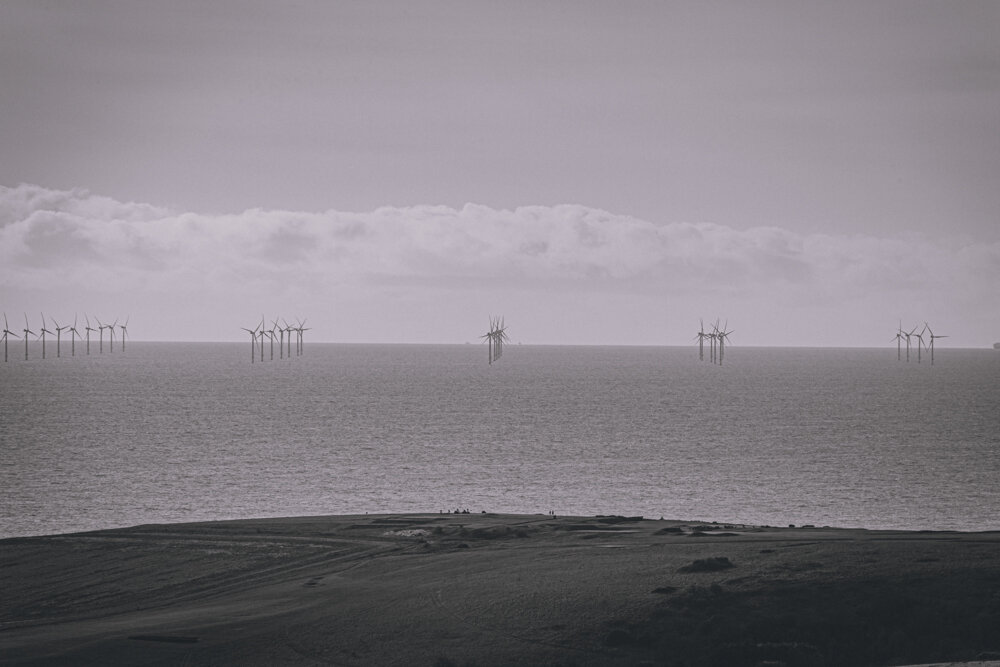Having gotten excellent results from their M42 to EF lens adapter I was curious to see how this adapter would compare especially given that it has optical correction glass in it.
Read MoreClarity
Clarity, so what do I mean by this? Basically I’ve decided that Portraiture has to go from my photographic practice. What I mane by “go” is that I will no longer be actively looking for opportunities in that photographic genre. There are several reasons for this but I will only go into the main one’s.
Read MoreFujifilm X-T5 and XF 18-120mm F4 LM PZ WR
My first shoot with the Fujifilm X-T5 and XF 18-120mm F4 LM PZ WR lens.
I have been looking forward to getting hold of Fuji's latest X-T camera and I have to say I am quite impressed with the X-T5. The level of detail you can get from it's 40MP sensor as well as the IBIS is fantastic, I just wish it had a better (as in larger) EVF because like many of the other camera manufacturers the EVF isn't designed for people who wear glasses. Also, I have small hands but I kept tripping the front dial with my finger which meant on occasion I changed the aperture without meaning to so I am going to invest in a grip to prevent this from happening in the future.
The XF 18-120mm F4 LM PZ WR lens did take a little getting used to, the fly-by-wire zoom control was a little strange at first but once I got used to it I was fine. However, I did keep knocking the zoom when I put my hand on the lens to stabilise the camera when taking a shot which was a little frustrating. I can see why they call it a video lens as it is the first that can be fully controlled remotely which you wouldn't be able to do with a conventional zoom lens. I think photography wise this lens is more of an "all rounder" for holidays & when you can only take one lens, it's nice and sharp in the centre but no so at the edges which you would expect from a lens with such a large zoom range. I am probably going to keep this lens primarily for its reach and that it is more designed for video, but I will be investing in more prime lenses as they are much lighter & have the aperture control dials on them which this lens does not.
This is just my first impressions of the X-T5, I will be shooting more images with my 23mm F2 & some of my vintage lenses so stay tuned.


















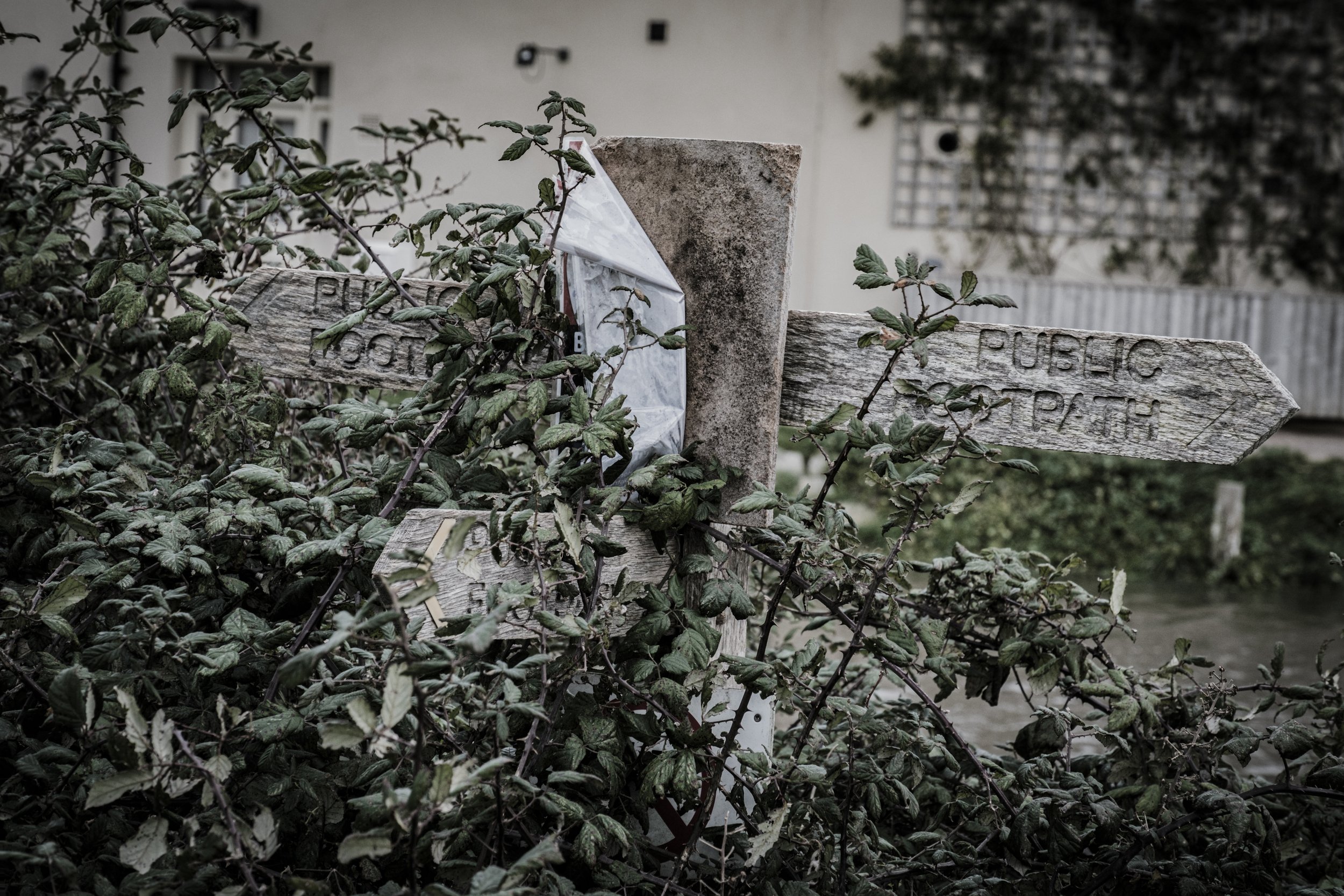
Colour Film Photography
Colour film photography is something I haven’t done for twenty years or so, between then and now I have shot nothing but black & white film (other than digital of course).
I bought on spec a Canon EOS 30 which the owner didn’t know if it still worked or not (it did/does work by the way). The lens I used was the Tamron 28-300mm f/3.5-6.3 Di VC PZD.
I planned to shoot 1 roll of KODAK Portra 160 & 2 rolls of Portra 400, unbeknown to me the camera came with an expired roll of FUJICOLOUR C200 already in it, so I ended up shooting 4 rolls of film. Before this I hadn’t shot any of these film stocks before, so I was very interested to see the results (see the gallery below).
The end results have made me decide that I like the more subtle tones of Portra so going forward Portra 160/400/800 will be my choice when it comes to colour film photography. This means I now have two film stocks that I will use for the majority of my film photography going forward, ILFORD DELTA 400 is my black & white option. This is going to help me be more consistent in the work I produce in the future.
Canon EOS R7 And Why I Returned Mine.
Well what can I say I gave in to GAS (Gear Acquisition Syndrome) and bought a Canon EOS R7 as soon as I could. One problem - I don’t like it.
I've been wanting an R7 ever since it was first announced because I wanted a Canon APS-C RF camera that I could adapt all my EF glass to. I used the drop-in CPL EF to RF adapter which as you can see from the gallery worked really well. However I am quite disappointed, the image quality was ok apart from some softness which I will come on to in a minute.
The whole shooting experience was not what I expected. I have used many Canon cameras in the past with no problems, however I found myself fighting the R7 to get what I wanted. This was a shock because I've never had that problem with ANY Canon camera, this is the kind of thing I have encountered with Sony cameras but never ever a Canon. I suspect the shooting experience might have been better with native RF lenses but good ones are far outside my price range. So, I had to settle with adapting EF lenses which you would think would be ok, but alas no it took longer than I expected to focus (longer than when I adapted the same lens on a Fujifilm X-T4 with a Metabones adapter), it left me with no confidence in the accuracy of the autofocus. One thing I found quite curious was when using my adapted EF lens, I found some of my images to be a little soft when shooting below 300th of a second which shouldn't happen. I think the IS (Image Stabilisation) in the lens & the IBIS (In Body Image Stabilisation) in the camera were fighting each other at slower shutter speeds but at faster ones it was less apparent.
The only other thing to mention is the size of the EVF (Electronic Viewfinder), I wear glasses and found it to be far too small as I kept missing the info that was displayed on the sides.
So as the title says I am returning it, I will be moving back to a Fujifilm X-T4 which with hindsight I should never have moved away from.
CHINON CE-5 35mm SLR Test
Went out a few weeks back and shot a roll of Bergger Pancro 400 and 2 rolls Ilford Delta 400 using a CHINON CE-5 35mm SLR with a Auto Chinon Multi-Coated F1.7 50mm Lens that I was testing.
Well, the camera worked quite well, the light meter was accurate most of the time and there were no light leaks which is good. The only downside is that the Chinon lens is not very sharp especially when you compare it to my FD mount lenses which are very sharp. The good thing is that it uses a Pentax K mount so there is plenty of good Pentax glass out there that I can get to use on this camera.
As for the film stocks I used, the Bregger Pancro was a bit too flat for my liking I much prefer the Ilford Delta. As the year progresses, I think I will try out some slower film at ISO’s 100 & 200 next.
Better Late Than Never
Well the title says it all, I’ve not posted since December 2021 so 4 months.
I have been keeping myself busy, I’ve got a day job which takes up a lot of my time, I’ve been shooting vintage lenses on my Fuji X-T4 & newly acquired Sony A7R III, I’ve been exploring mobile phone photography, some casual photography using a premium Point-And-Shoot camera, and reacquainting myself with 35mm film photography.
So instead of me waffling on I have put some of this work into some slideshows below, enjoy.
Vintage Lenses
Mobile Phone
Compact Camera
35mm Film
New PhD Idea
Every day we are bombarded by imagery to the point where it has become part of our everyday lives.
The use of still and moving imagery in recent history such the American elections and the Brexit referendum got me thinking about some of the parallels with George Orwell’s novel “1984”. Their use to expose & exploit the fears and predigests of people for political advantage brought the novel very much to the forefront of my thoughts.
A very recent and ongoing example of what I am talking about is the use of imagery by the anti-vaccination movement(s) as a “scare” tactic to further their agenda as well as in the USA Trump followers have used the same tactics to further their political agenda that the election was “stolen”. The reality of the world is being assaulted, twisted, distorted by the manipulation and mass dissemination of imagery on a daily basis.
Read MoreSome Street Photography
A few hours of street photography in Brighton using a cheap compact point-and-shoot camera and my mobile phone.
Image Licensing
I’ve been mulling over how I should be licensing my work, up until now I have been using the built in licensing feature of 500px but I am moving over the Adobe Stock.
The main reason for moving is the tiny licensing fees that my images are earning, this huge reduction has coincided with 500px linking up with Getty Images. Since this link up my images sales earnings have plummeted by over 90%.
To give you an example, I licensed an image yesterday where my take of the fee is 60% of the sale price, that sound like a lot right? $0.11 is the 60% I was paid which is laughable, since the Getty Images link up not a single image sale has earned me more than $1, this can’t go on which is why I am withdrawing ALL image licensing from 500px.
I’m going to give Adobe Stock a try and see if they are any better.
PhD Idea
My initial idea is about the UK’s national parks, I was thinking about an exploration on the theme of “Access”. What I mean by access is how the public accesses what is mostly private land. I find the contradiction of national parks - that are not owned by the nation but rather private landowners and trusts an interesting contradiction – Simon Roberts “National Property” would be a relevant reference for this concept. The idea for this has come from the research I carried out for my MA projects (stages 1 & 2), as well as observations I made during the first lockdown when every man and his dog was fleeing for the hills for their “exercise” most notably Snowdonia with the huge amount of traffic and parked cars everywhere.
I was thinking I could focus on the specific contradiction of Environment versus Tourism, national parks were brought into existence to preserve their environments yet these same parks also want to attract tourism (people) which damages the very environment they are protecting/preserving, a recent example of this would be the repairs they have had to make to a fell path in the Lake District where they have had to airlift equipment and materials on to the hillside to repair the public footpath to prevent more erosion of the hillside from walkers walking around the damaged path. It is this contradiction that I would want to explore as the environment is a very important subject in the context of our warming environment and the economic and ecological threat it poses. Iceland would be a good case study to reference as it has been a victim of its own success and has had to take steps to protect its environment from over tourism.
10 of the 15 UK national parks were established in the 1950’s, 1 in 1989 and the other 4 between 2001 & 2010.
Not only is the South Downs national park the UK’s newest national park (established in 2010) but also the most densely populated of all the 15 UK parks. Interestingly the parks boarder skirts around the urban centres which is almost a continuous stretch of interlinked towns and cities that run along the coast to the south of it. It does include one large town (Lewes) with most of the urban areas that are contained in the park limited to villages and smaller towns (e.g., Pulborough). When looking at a satellite map of the park you can see a mosaic of cultivated fields, grassland and woodland crisscrossed by roads.
· Historically how has the park been depicted (literature, art, and photography).
· What is the viewpoint from which I will generate work?
· What issue(s) am I exploring?
· Why is this relevant?
The contradiction of a national park being for the nation, yet the majority of the land is in private hands is to me an essential element. There’s farmland, sites of historical and scientific interest as well as infrastructure (powerlines, roads, water sources) all intermingled with one another. The more well-known parts of the park seem to feature heavily in art literature and photography, and this is so when it comes to the promotion of the park by the park’s management authority.
The South Downs Way is a potential thread from which to explore from as it runs from the most eastern edge of the park (Eastbourne) to the most western edge of the park (Winchester). Such an exploration would require multiple access points which feeds into the idea of public access to private land as well as what kind of access points there are available.
Website Updates
Updated my website.
Read MoreFirst Semester Completed!
Well the last two months has been a bit of a slog, instead of taking more photos I spent most of the time writing.
Read MoreShoot 5
Fifth Shoot: - 21st November 2020
Following on from the conclusions of the previous shoot I walked north along the river Adur outside the villages of Upper Beeding & Bramber. I had my repaired tripod and a cable release as well as my Nikon D7100.
As I had mentioned in the conclusions part of the previous shoot I chose to shoot at a fixed aperture & shutter speed letting the camera decide the ISO, it was a cloudy day so I did have a little concern that any shots I took would be very grainy and full of noise.
Unlike the previous shoot I will try to get back to using leading lines to take the “viewer” to the person(s) in the landscape.
Conclusions
At the start of this shoot I was concerned that my images would be full of noise and basically not look “good”.
I have to say I was pleasantly surprised by the results, most of the shots were taken at ISO 1100 which the camera dealt with quite well. I didn’t have to do much in the way of adjustments – a little noise reduction was needed as there was a bit of noise but no where near as much as I thought there would be.
There was more colour in the scenery that I had expected (green grass) and because of the recent wet weather all the tracks were quite muddy giving a nice contrast to the grass. The only downside was the heavy cloud, it would have been nice to have some sunshine but I’ll take what I can considering the time of year it is.
So having tried a fixed aperture (F11) & shutter speed (500th of a second) I think I will stick to this method so that I freeze as much movement in the scene as possible with as much detail as possible.
The only other area to experiment with now is the time of day I shoot - early morning or early evening.
Shoot 4
Forth Shoot: - 13th November 2020
After getting some feedback on one particular photo I re-edited it. I cropped the top and bottom of the photo and changed it from black & white to colour. I posted it up on my 500PX site and it got a lot more views, likes and comments which I wasn’t expecting.
Later on in the week (as above title suggests) I went to my next location which was the South Downs above Woodingdean just outside Brighton.
My tripod was “in the shop” so to speak so I had to resort to using a monopod instead combined with a different lens (stabilised), my hope was that this combination would be good enough to get the same kind of sharpness as in my previous shoot (which was on a tripod). In some of the shots I experimented with dropping the aperture down from f.11 to f.8 to see if I could get a faster shutter speed and thus sharper images.
I also decided I would do both black & white and colour versions of the same images to see which works best. The intention being so I can then nail down weather I will stick to black & white or colour for the project to keep a consistent aesthetic.
Conclusions: -
I found it hard to find the right kind of compositions that had come so easily in the previous shoots. There were less people and the terrain posed a challenge. I found myself taking telephoto shots of the coastline with tiny specs of people in the landscape so no leading lines as in the other shoots.
I found that the monopod even with a stabilised lens wasn’t as good as a tripod and the different lens posed it’s own problems. The main problem was that the lens wasn’t anywhere near as sharp as the lens I had used on the two previous shoots.
I still have to decided on how many “finished” images I want in total and from each location, I’m thinking somewhere in the range of 10 to 25 final images. The final number will depend on how many locations I can shoot at and the whole COVID situation, if possible I’d like to present them in a book. There are still a few locations I’d like to try but the COVID situation may prevent me from going too far from home base.
I have three more experiments to try before I make my decision on the final setup & aesthetic for this project: -
Set a single shutter speed that is fast enough to freeze movement in the image as well as a high aperture value for sharpness and let the camera decided the ISO – this would mean there would be variations on the ISO value but shutter & aperture would be the same so images would be consistent
Try some manual lenses I have to see if they are sharper and a feasible option. They are almost all prime lenses so I could in theory end up producing all the work using one single focal length thus adding another consistent element to the images produced
I have another digital camera with a higher pixel count and colour bit depth. Though it is a cropped sensor camera unlike what I have used for shoots 2 to 4 (first shoot was shot on a similarly cropped camera though not THE camera I am referring to in this instance)
Shoot 3
Third Shoot: - 8th November 2020
The third shoot was at Cissbury Ring on the South Downs outside Findon. This location is one I have been to before and has been on my list of locations for this project. The first problem I encountered with this location is its popularity. In fact there were so many people there on the day I first went (the 7th of November) that it was impossible to find a safe place to park so I abandoned that attempt opting to return the next day at an earlier time (the 8th of November). This was a pity as the weather was very nice, sunny, and bright.
I returned the next day (the 8th of November) with very different conditions. There was a layer of cloud producing soft but diminished lighting conditions as well as some light drizzle though the drizzle did dissipate not long after I arrived.
There were plenty of hikers, runners, and dog walkers so as before I had no trouble finding subjects to photograph, to be fair there was actually at times to many people around. This was also the first shoot where I shot everything on a tripod using a shutter release at the lowest ISO value my camera would go down to (100), I still stuck to the aperture setting of f11.
Conclusions: -
Having the tripod did make a difference, it slowed me down which made me think much more about what I was shooting. A lot more thought went into framing and composition, rather than shooting off shot after shot. It was heavy though which I noticed more the next day when moving my arms around.
I think I may have to make a compromise and use a stabilised lens with a slightly longer focal length of 28mm using a monopod or the same lens at a higher ISO setting (400) again on a monopod. This would reduce the weight I would be carrying around and allow me to cover more ground. This is something I will try on my next shoot.
Shoot 2
Second Shoot: - 2nd November 2020
My second location was the Adur valley running along the river Adur from Upper Beeding & Bramber to the footbridge short of the old Shoreham Cement Works. I chose this area as I had noticed during the lockdown in the spring that many people flocked to the area for their “exercise”. Most rode or walked the South Downs Way, which runs down from the direction of Devil’s Dyke crossing the river Adur at the footbridge before going off towards the old church and on the Steyning. It is also a popular route for local dog walkers, hikers, and cyclists.
I made three changes from the first shoot: -
1. Camera – I used a full-frame Canon 5D Mark II (I used a Nikon D5600 for the first shoot)
2. A non-stabilised wide-angle lens – 20-35mm
3. I stuck to a single aperture setting (f11) for all images
Conditions were not as bright as the previous shoot; the cloud cover was variable which made things challenging. When the sun was uncovered there was considerable glare on the river which even with a CPL filter on the lens.
Just as I did in the first shoot there plenty of shooting opportunities with the steady flow of hikers and dog walkers. I used the river and footpaths as my leading lines.
Conclusions: -
The wide-angle lens worked well expanding the field of view though it did require more careful consideration of foreground elements such as vegetation and barriers.
Shoot 1
First Shoot: - 16th October 2020
I travelled a few miles from my home up onto the South Downs to an area I know from previous visits and driveby’s. The purpose of this adventure was to try to visualise my initial concepts for this project and see what potential problems might arise.
I chose not to use a tripod, instead shooting handheld relying on a combination of bright good weather conditions, using an ISO of 400 and the lenses image stabilisation. To a good degree this combination was successful, only through very close inspection of the images could you see any sign of camera shake.
I found I had plenty of opportunities to shoot people in the landscape as there was a regular flow of walkers, cyclists, hikers, and the occasional horse rider. I tried to line up my “subjects” in the landscape with leading lines so to draw the viewer to them in the distance with differing levels of success.
Conclusions: -
It became very apparent that stage three of my initial plan for this project was going to be problematic. The location(s) were not accessible by public transport so getting someone to a location would mean they would have to have their own transport. I have dismissed this idea as part of this project though I could use it in later separate project. The colour scheme of the landscape itself was a challenge as some situations were better in black & white than others which were better in colour.
Some of my questions about this project have now been answered.
Practicalities – What is and what is not reasonably achievable in applying my ideas for this project in the real world
Visualising my ideas – Taking in my head what I thought it would look like and seeing it in reality
I still have some questions to be answered: -
Landscape or portrait orientation images or a combination of both?
Black & white, colour or a mixture of both?
Digital, film or a mixture of both?
How much editing should I do to the images?
Wide angle or standard lens?
Should I stick to a single aperture setting for all images?
Introduction
Solitary Landscape
During the national lockdown in the spring of 2020 many people were effectively trapped in their own homes. This confinement caused levels of stress and other related mental issues to rise. Later the government revised the rules so that people could leave their homes for exercise, consequently many flocked to the countryside. Cycling and walking/hiking replaced other activities that were closed (the gym, sporting activities, socialising, etc). Even so strict rules requiring people not to mix and to stay away from each other were in force to contain the virus. In effect people were still trapped, starved of social interactions but could to a degree move more freely around their local area.
Now we come to my initial project concept. I want to portray the solitude, the loneliness, the feeling of separation, the emptiness that many people felt during the lockdown and still felt/feel even though when the subsequent restrictions were lifted. The duality of using the landscape to convey these concepts as a reference to actual events as well as in a conceptual way to express the emotions people have felt and still do feel is no accident. The landscape is the canvas from which the emotions I have mentioned before will be expressed on.
Initial concept
Stage One: – Empty landscape
Stage Two: – Distant figure in the landscape
Stage Three: – Figure facing the camera closer in the landscape
Stage Four: – Studio portraits
10 Weeks To Go!
Ok so now it’s T-Minus 10 weeks until I start my masters degree!
So a few things have changed since my last update.
Read More


























